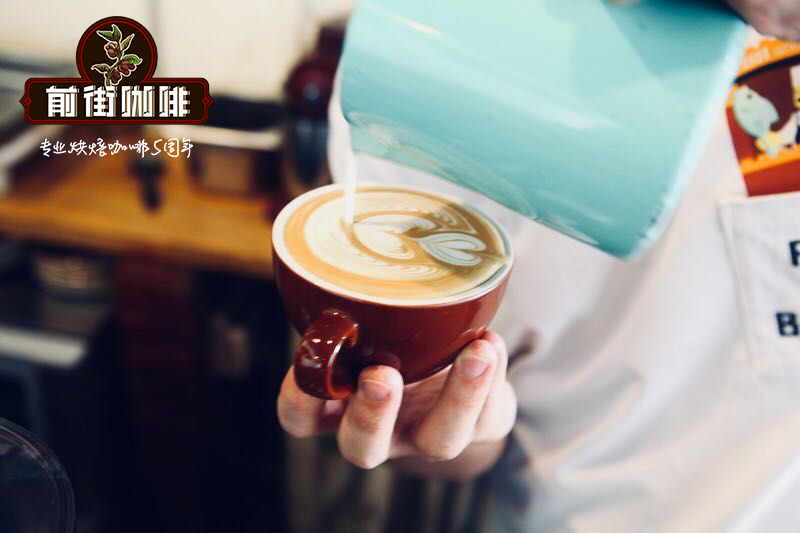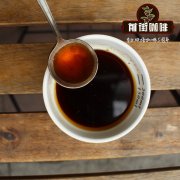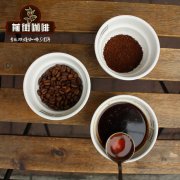The planting history of Mocha boutique coffee beans in Matari, Yemen? Flavor and taste characteristics? How

Professional coffee knowledge exchange more coffee bean information please follow the coffee workshop (Wechat official account cafe_style)
Yemeni mocha boutique coffee bean Matari Mattari growing history? Flavor and taste characteristics?
Origin & # 39; Manor Matari, Yemen
Geographical environment of production: above 1400 meters above sea level
Treatment: insolation
Taste special: full acidity, strong stimulation, more prominent than the fruit, with the perfect depth and concentration. When the coffee cools, it has a hint of fruit and chocolate.
Until the sixth century AD, Yemen was called Arab, so coffee trees shipped from Yemen to other places were also called Arabian coffee trees. The origin of these trees is Ethiopia (Ethiopia), and the Dutch spread these coffee trees all over the world. Dutch businessmen heading eastward around the Cape of good Hope began to make a long journey.
Before wading to India, you have to pass through the east coast of Africa to the port of Mocha in Yemen. In 1696 the Dutch introduced the coffee tree to Ceylon (now Sri Lanka) and then to Batavia in Java. Mocha beans are smaller and rounder than most, which makes mocha beans look like peas-in fact, bean-shaped berry coffee beans (Peaberry bean) are sometimes called mocha beans. Mocha beans are similar to Ethiopian Harrar beans in shape, with small particles, high acidity and a hint of chocolate, so the attempt to add chocolate to coffee is a natural development. In Yemen, coffee growers plant poplars to provide shade for coffee trees to grow. As in the past, these trees are planted on steep terraces to maximize the use of less rainfall and limited land resources. In addition to Tibica and bourbon coffee trees, more than a dozen different coffee species native to Ethiopia are grown in Yemen. However, even the best coffee, such as premium mocha, is air-dried and the peel is connected to the beans. Until now, traditional stone mills are often used to remove dry and hard shells, which makes the shape of coffee beans very irregular and often damages them. Despite the high quality and smooth aroma of Yemeni coffee, there is something unsatisfactory, that is, the quality can not be continuously guaranteed, and the classification of its coffee beans is uncertain. Traditionally, the best coffee beans in Yemen come from Mattari, followed by Sharki, followed by Sanani. These producing areas are treated by the sun, so the coffee beans have a wild flavor. Generally speaking, Yemeni coffee has a unique character, wild, complex and exciting, especially the charming sour wine and deep dark chocolate flavor. These beans are low in caffeine and are exported from December to April of the following year. The problem in the past has been that coffee from the north was mixed with shoddy stuff before it was shipped from the southern port of Aden. Only coffee shipped from the port of Hodeida can be determined to come from the north.
How to cook Yemeni mocha?
1. Filter cup: V60
two。 Water temperature: 88 degrees
3. Degree of grinding: small Fuji degree of grinding 4
4. Baking degree: medium baking
5. Steaming time: 25 seconds
Flavor: balanced, chocolate, long-lasting caramel sweetness
Qianjie Coffee suggestion: 15g powder, 4 grinding of small Fuji ghost tooth cutter, V60 filter cup, 88-89 degrees water temperature, 30g water injection for the first time, 25 s steaming, water injection to 104g water cut off, wait for the amount of water in the powder bed to go down to half and then water injection, slow water injection until 220g water, 5 grams at the end, no water powder ratio at 1:15, extraction time about 2:00 (calculated after stewing)
Important Notice :
前街咖啡 FrontStreet Coffee has moved to new addredd:
FrontStreet Coffee Address: 315,Donghua East Road,GuangZhou
Tel:020 38364473
- Prev

What's the taste of authentic Blue Mountain coffee? The reason for the high price of Jamaican Blue Mountain coffee is
Professional coffee knowledge exchange more coffee bean information please follow the coffee workshop (Wechat official account cafe_style) Elaraby plus coffee Central and South America Jamaica: blue Mountain Coffee the famous Jamaican Blue Mountain Coffee (bluemountain) can be said to be the king of coffee, but only coffee produced in Jamaica's Blue Mountains above 5000 feet above sea level can be called Jamaica.
- Next

Yemeni mocha coffee cultivation history and flavor characteristics? How do you make Yemeni mocha? How three?
Professional coffee knowledge exchange More coffee bean information Please pay attention to coffee workshop (Weixin Official Accounts cafe_style) Yemen mocha coffee planting history and flavor characteristics? How do you make Yemeni mocha? How do you cook it in three stages? Yemen is a traditional Muslim country. Yemen, located in the Arabian Peninsula, has the reputation of coffee queen and coffee lady, compared with Ethiopia.
Related
- Detailed explanation of Jadeite planting Land in Panamanian Jadeite Manor introduction to the grading system of Jadeite competitive bidding, Red bid, Green bid and Rose Summer
- Story of Coffee planting in Brenka region of Costa Rica Stonehenge Manor anaerobic heavy honey treatment of flavor mouth
- What's on the barrel of Blue Mountain Coffee beans?
- Can American coffee also pull flowers? How to use hot American style to pull out a good-looking pattern?
- Can you make a cold extract with coffee beans? What is the right proportion for cold-extracted coffee formula?
- Indonesian PWN Gold Mandrine Coffee Origin Features Flavor How to Chong? Mandolin coffee is American.
- A brief introduction to the flavor characteristics of Brazilian yellow bourbon coffee beans
- What is the effect of different water quality on the flavor of cold-extracted coffee? What kind of water is best for brewing coffee?
- Why do you think of Rose Summer whenever you mention Panamanian coffee?
- Introduction to the characteristics of authentic blue mountain coffee bean producing areas? What is the CIB Coffee Authority in Jamaica?

